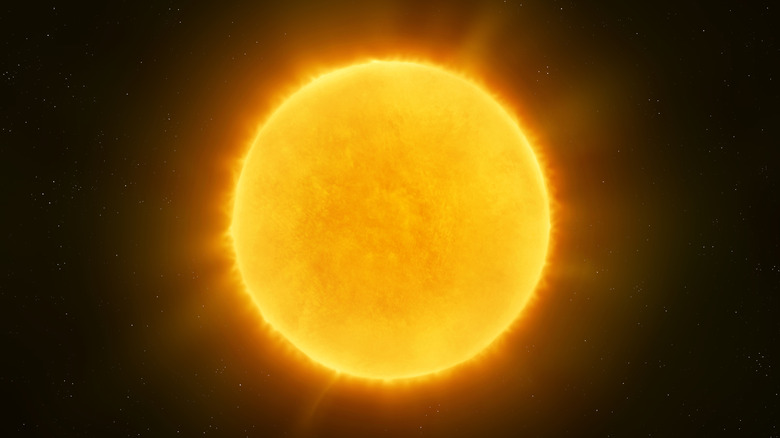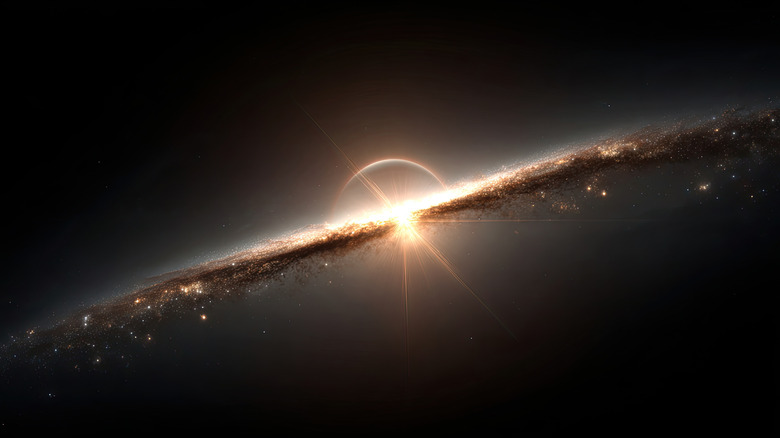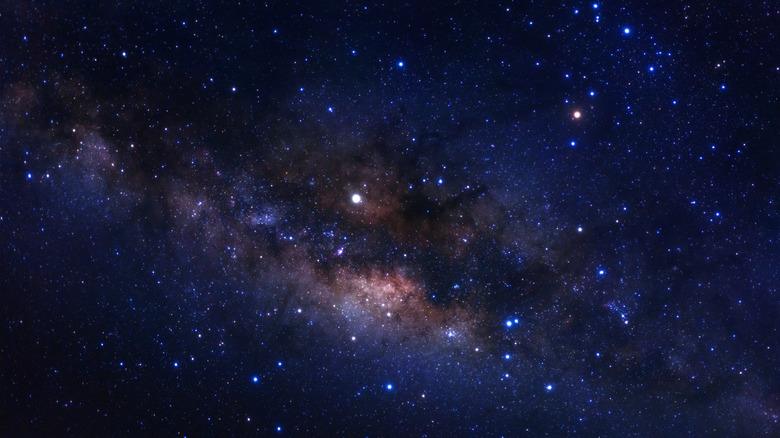This Young Star Has Scientists Rethinking Current Planet Formation Models, Here's Why
For decades, scientists have studied how planets form by looking at young stars nearby, assuming that these environments could be representative of all star systems. However, as astronomers discover thousands of exoplanets unlike anything in our own solar system, they have realized most stars actually form in crowded, intense clusters that are surrounded by massive, hot stars. Now, a team of researchers has decided to take a closer look at these high-radiation environments, and one star in particular, to understand how this harsher setting might change the way planets form.
Their findings, published in the Astronomy & Astrophysics journal in August 2025, is titled "XUE: The CO2-rich terrestrial planet-forming region of an externally irradiated Herbig disk." Using the James Webb Space Telescope (JWST), they uncovered a young star that's turning everything we thought we knew about planet formation on its head.
This star is located in a massive star cluster over 5,500 light-years away. The star, referred to as XUE 10, is bombarded by ultraviolet radiation thousands of times stronger than what our sun emits. What they found suggests that intense radiation from neighboring massive stars can dramatically reshape the building blocks of planets. This gives scientists a rare glimpse into planetary formation under extreme conditions.
What was discovered with the young star
To understand XUE 10's unusual chemistry, the team of researchers turned to the James Webb Space Telescope's MIRI instrument, which can detect faint infrared light, and observed the star under three different infrared settings. The team then processed the data through JWST's science pipeline, correcting for instrumental quirks, removing bad pixels, and combining the observations to create a clean spectrum. This high-quality spectrum revealed the chemical fingerprints of water and carbon dioxide in the star's disk.
Looking closer at the infrared spectrum, the team was surprised at what they found in the inner disk of XUE 10. There was heated dust and complex carbon molecules called PAHs that appeared at multiple wavelengths, mingling with silicate minerals. The real surprise, however, came from the gas. The disk showed an unusually strong CO2 emission, including four rare isotopic forms that have never been clearly seen together in a protoplanetary disk before. This unusual chemical fingerprint suggests that intense ultraviolet radiation from nearby massive stars may be destroying water while enhancing CO2.
To understand the star at the heart of this unusual disk, astronomers analyzed XUE 10's light in visible wavelengths. They identified characteristic absorption lines from hydrogen, calcium, and other elements, then compared these features to stellar models to determine the star's temperature, surface gravity, and chemical makeup. The results show that XUE 10 is a so-called Herbig star, that is a young, pre-main-sequence star slightly more massive than the sun and shining 70 times brighter.
What this means for current planet formation models
XUE 10's disk is unlike any other young star system studied so far. While most previous observations focused on smaller, sun-like stars in calm and isolated regions — like this dead galaxy — XUE 10 is a more massive Herbig star in a crowded, high-radiation cluster. This study highlights that disks around intermediate-mass stars may evolve differently. Because similar Herbig disks are typically difficult to observe in detail, XUE 10 provides an important glimpse into this fascinating process and could impact future planetary formation models.
While XUE 10's disk shares some traits with other intermediate-mass and Herbig disks, it stands out for its unusual carbon dioxide chemistry. Past studies of similar stars with instruments like Spitzer and Herschel showed that these disks generally lack chemical richness, making XUE 10 a very unique find. XUE 10 is clearly a young star in its cluster, confirming that this fascinating chemistry is happening in a newborn planetary system, not around an old star shedding its outer layers.
This discovery also marks the first time astronomers have detected four different isotopes of carbon dioxide in a single protoplanetary disk. XUE 10 highlights how massive stars and harsh radiation can radically reshape the building blocks of planets. Future JWST studies of other intermediate-mass stars will be crucial to understand whether these chemical patterns are common, or if XUE 10 is a rare specimen.


